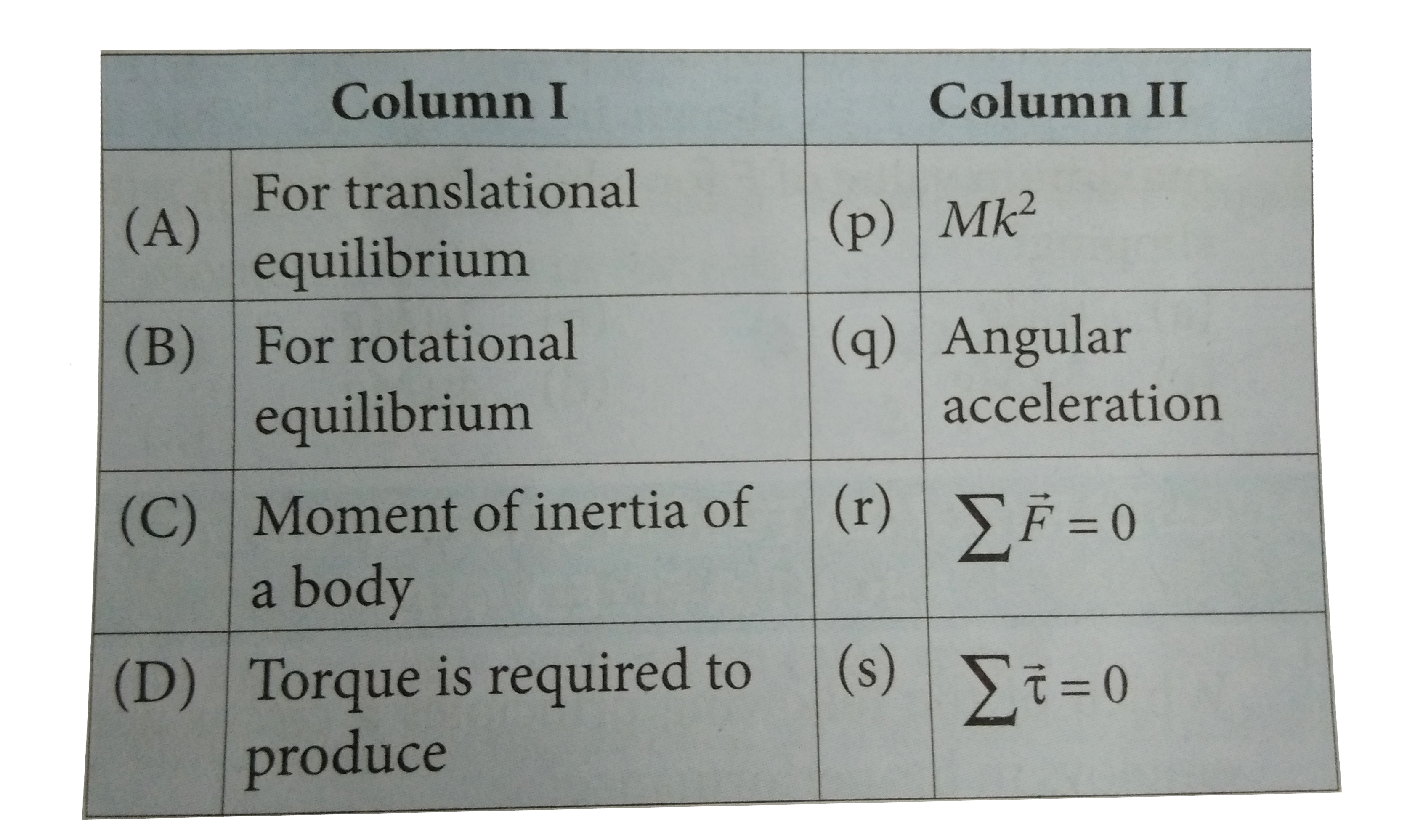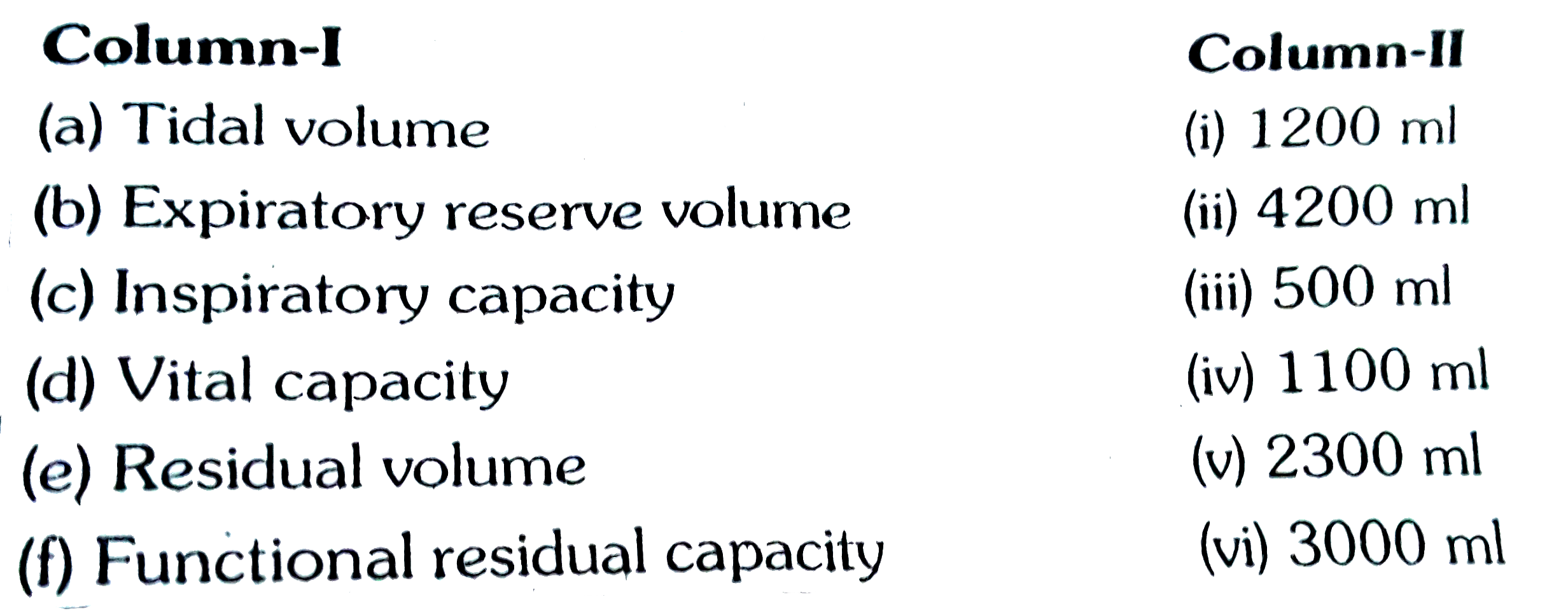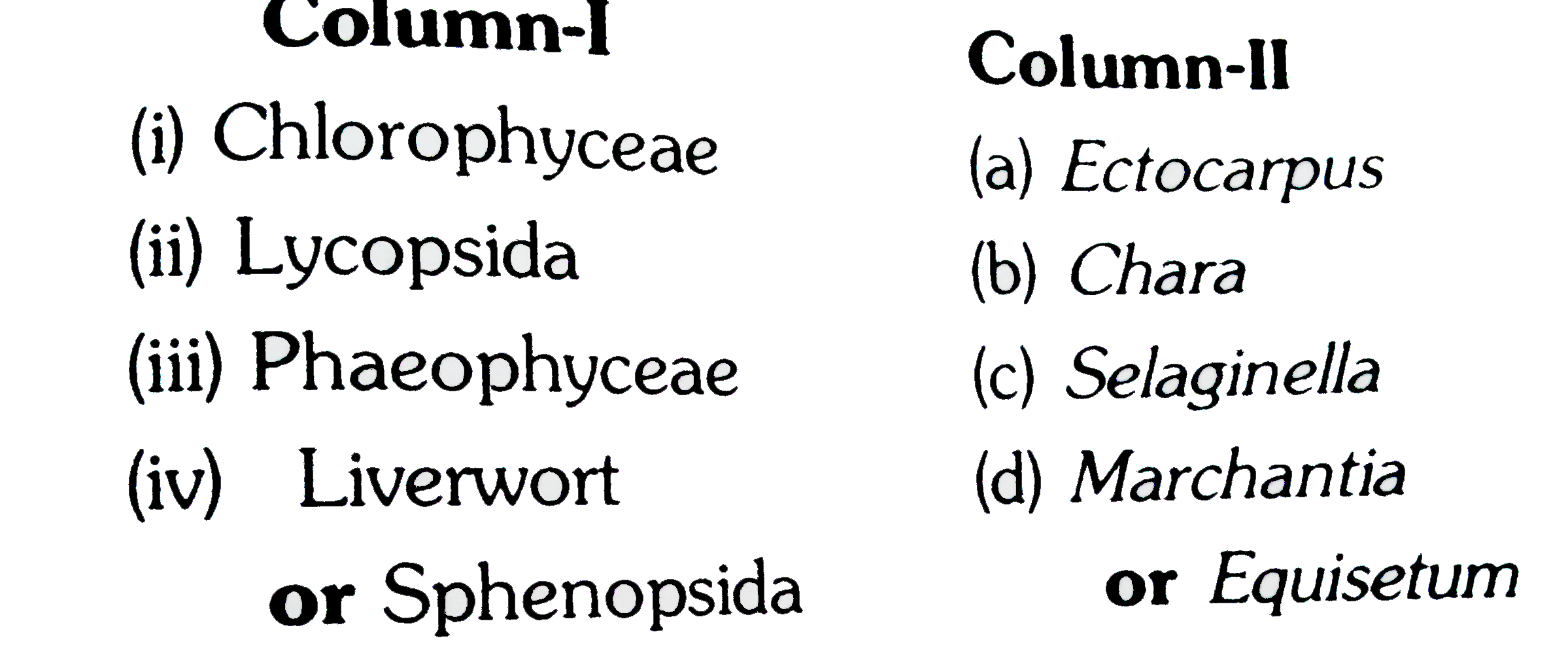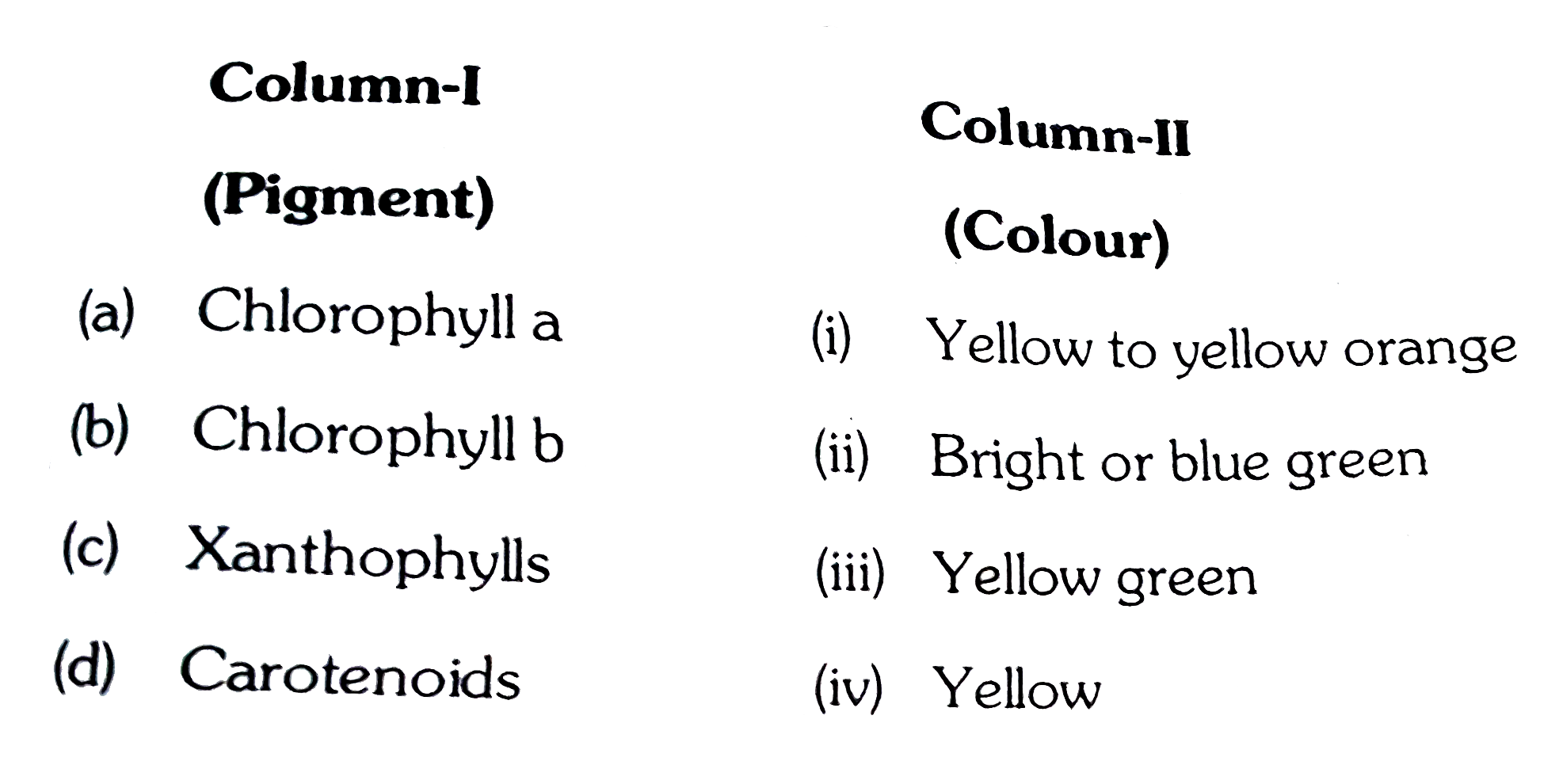Match the column I and II
i – a, ii – c, iii – b, iv – d
i – a, ii – d, iii – b, iv – c
i – c, ii – b, iii – d, iv – a
i – c, ii – a, iii – b, iv – d
The correct Answer is:D
To solve the matching question between Column I and Column II, we will analyze each item in Column I and find its corresponding match in Column II based on their characteristics and examples.
1. Identify Chrysophytes:
- Chrysophytes are commonly known as golden algae. They are a large group of algae found in freshwater and include diatoms and yellow-green algae.
- Match: Chrysophyte (i) → Diatom (c)
2. Identify Dinoflagellates:
- Dinoflagellates are a group of flagellate eukaryotes, and a common example is Gonyaulax, which is known for causing red tides in oceans.
- Match: Dinoflagellate (ii) → Gonyaulax (a)
3. Identify Euglenoids:
- Euglenoids are single-celled flagellate eukaryotes commonly found in freshwater. A well-known example is Euglena.
- Match: Euglenoids (iii) → Euglena (b)
4. Identify Slime Molds:
- Slime molds consist of a gelatinous mass of protoplasm and are known for their amoeba-like characteristics. A common example is Plasmodium, which is an obligate parasite.
- Match: Slime molds (iv) → Plasmodium (d)
Final Matching:
- (i) Chrysophyte → (c) Diatom
- (ii) Dinoflagellate → (a) Gonyaulax
- (iii) Euglenoids → (b) Euglena
- (iv) Slime molds → (d) Plasmodium
Answer:
The correct matching is:
- (i) → (c)
- (ii) → (a)
- (iii) → (b)
- (iv) → (d)
Thus, the final answer is C, A, B, D.
- Chrysophytes are commonly known as golden algae. They are a large group of algae found in freshwater and include diatoms and yellow-green algae.
- Match: Chrysophyte (i) → Diatom (c)
- Dinoflagellates are a group of flagellate eukaryotes, and a common example is Gonyaulax, which is known for causing red tides in oceans.
- Match: Dinoflagellate (ii) → Gonyaulax (a)
- Euglenoids are single-celled flagellate eukaryotes commonly found in freshwater. A well-known example is Euglena.
- Match: Euglenoids (iii) → Euglena (b)
- Slime molds consist of a gelatinous mass of protoplasm and are known for their amoeba-like characteristics. A common example is Plasmodium, which is an obligate parasite.
- Match: Slime molds (iv) → Plasmodium (d)
- (i) Chrysophyte → (c) Diatom
- (ii) Dinoflagellate → (a) Gonyaulax
- (iii) Euglenoids → (b) Euglena
- (iv) Slime molds → (d) Plasmodium
The correct matching is:
- (i) → (c)
- (ii) → (a)
- (iii) → (b)
- (iv) → (d)
Similar Questions
Knowledge Check
Match the Column I and Column II:
 A1. i. 2. ii 3. iii 4. ivB1. i 2. ii 3. iii 4. ivC1. i2. ii 3. iii 4. ivD1. i 2. ii 3. iii 4. iv
A1. i. 2. ii 3. iii 4. ivB1. i 2. ii 3. iii 4. ivC1. i2. ii 3. iii 4. ivD1. i 2. ii 3. iii 4. ivMatch the Column I and Column II:
 A1. i 2. ii 3. iii 4. ivB1. i 2. ii 3. iii 4. ivC1. i 2. ii 3. iii 4. ivD1. i 2. ii 3. iii 4. iv
A1. i 2. ii 3. iii 4. ivB1. i 2. ii 3. iii 4. ivC1. i 2. ii 3. iii 4. ivD1. i 2. ii 3. iii 4. ivMatch the Column I and Column II.,B
 AA-p, B-q, C-r, D-sBA-q, B-r, C-s. D-pCA-r, B-q, C-p, D-pDA-r, B-s, C-p, D-q
AA-p, B-q, C-r, D-sBA-q, B-r, C-s. D-pCA-r, B-q, C-p, D-pDA-r, B-s, C-p, D-q






